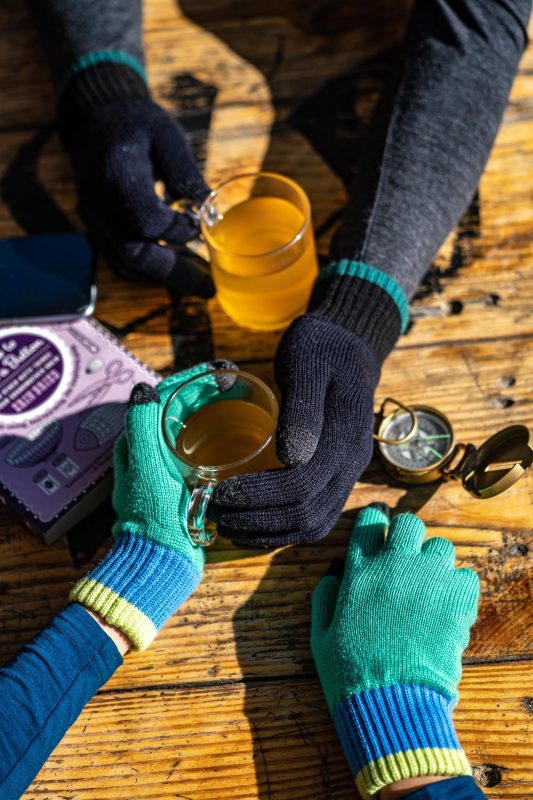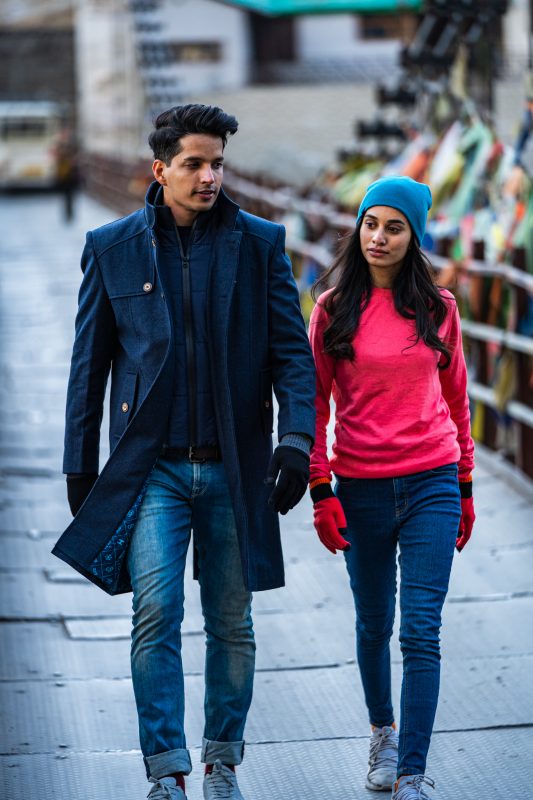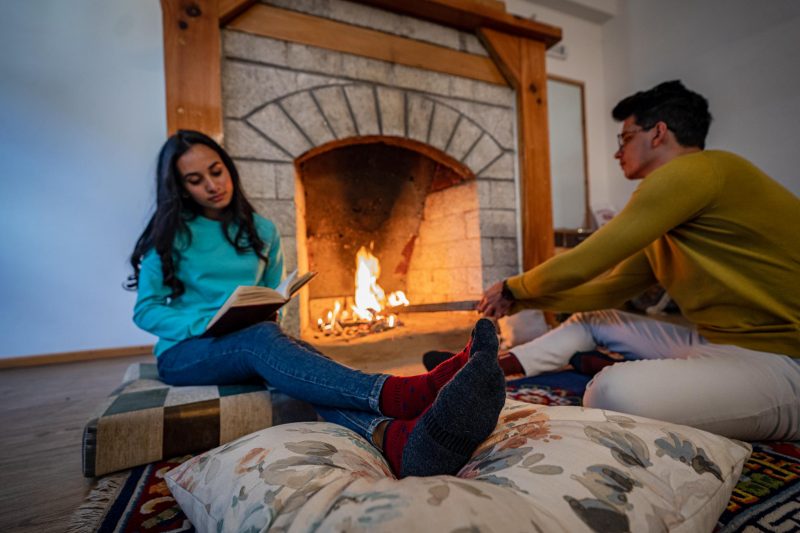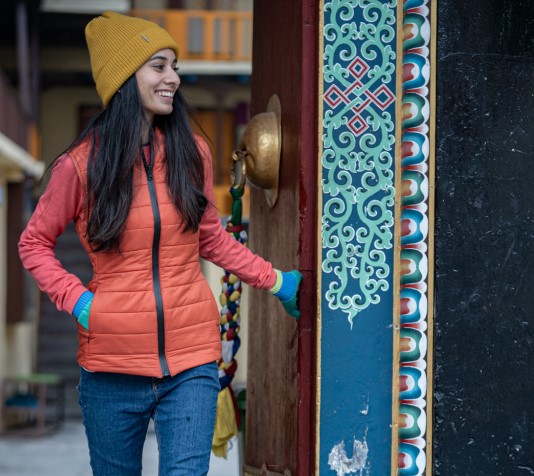
As winter sets in, students studying abroad may find it challenging to stay warm and comfortable in unfamiliar colder climates. One of the most crucial skills to master during this time is how to layer clothes or outfits effectively. Layering clothes helps regulate body temperature and allows for flexibility in adjusting to changing weather conditions.
In this blog, we will discuss layering tips for winter wear for students studying abroad, providing insights on how to layer clothes effectively to stay warm and comfortable. Whether you are exploring new surroundings or attending classes, mastering the art of layering outfits is essential to make the most of your winter abroad experience.
So let’s dive in and discover how to layer clothes to stay warm, comfortable, and fashionable this winter season!
Table of Contents
Importance of layering for students studying abroad
Studying abroad can be an exciting and life-changing experience, but it also comes with unique challenges, especially during winter. Students who come from warmer climates may find it challenging to navigate the colder weather and stay warm and comfortable while exploring their new surroundings. That’s where layering outfits comes in – a crucial skill that can make all the difference in staying warm and comfortable during winter.
Learning how to layer clothes effectively is all about creating multiple layers of clothing that can be added or removed per changing weather conditions. It allows you to regulate your body temperature by trapping warm air between layers, providing insulation and protection against cold weather. By layering outfits and adding accessories, you can stay warm and comfortable while studying abroad during winter. Not only does it allow you to adjust to changing weather conditions, but it also provides versatility in dressing up or down as per the occasion.
The Basics of Layering Outfits for Winter Wear
Winter weather can be unforgiving, but that doesn’t mean you have to sacrifice your fashion sense to stay warm. The key is to master the art of layering outfits for winter wear. Here are the basics of how to layer clothes or outfits for the upcoming winter season:
Start with a Base Layer:
The base layer is the first layer of clothing that comes in contact with your skin. Choosing a fabric that can wick moisture away from your skin is essential to keep you dry and comfortable. Merino wool and natural fibre like bamboo fibre are excellent choices for a base layer. It helps keep your skin dry by wicking away sweat and provides an insulating layer that helps retain body heat.
Add a Mid-Layer:
The mid-layer insulation layer traps heat between layers, providing warmth and comfort. Wool sweaters, fleece or parka jackets are excellent choices for mid-layers as they are lightweight, breathable, and provide excellent insulation. Just remember that the mid-layer should be thicker than the base layer and thinner than the outer layer.
Outer Layer:
The outer layer is the final layer of clothing that protects you from wind, rain, and snow. A waterproof and breathable jacket or coat is the best choice for the outer layer. It should be large enough to accommodate the mid-layer and base layer while providing enough room for movement.
To learn more about winter layering, click here.
Why choosing the right fabrics for each layer important?
Choosing the right fabrics for each layer is essential to make you feel breathable, moisture-wicking, and ensure proper insulation. When selecting the right size and fit, consider the layering effect. Choose base layers that fit snugly against your skin but allow for movement. Mid-layers should fit loosely enough to accommodate the base layer and allow movement. The outer layer should be large enough to accommodate the other layers while providing enough room for movement.
Here are some tips for how to layer clothes for winter:
- Start with a thermal as a base layer that wicks moisture away from your skin to keep you dry and comfortable.
- Add a sweater as a mid-layer for insulation and warmth. Choose a material that is lightweight, breathable, and provides insulation.
- Finish with a trench coat or Parkha jacket as an outer layer that protects you from wind, rain, and snow. Choose a waterproof and breathable material that is large enough to accommodate the other layers and still allow for movement.
- Don’t forget accessories like warm hats or beanies, woollen gloves, and scarves that protect your head, hands, and neck from the cold weather.
Layering Outfits for Students Studying Abroad
Studying abroad can be an incredible experience, but it can also present a new set of challenges, especially when it comes to dressing for the winter weather. Layering outfits is essential for staying comfortable and stylish during the colder months. However, it can also be challenging to pack efficiently while still having enough options for different weather conditions. Here are some tips to learn how to layer clothes for students studying abroad:
Clothing Recommendations for Different Winter Weather Conditions:
The winter weather conditions can vary greatly depending on where you are studying. It’s essential to have clothing options that can adapt to different temperatures and weather conditions. Here are some recommendations for different winter weather conditions:
Mild Winter:
Layering with a lightweight base layer and mid-layer is usually sufficient for mild winter weather. A waterproof and breathable jacket or trench coat is also essential for protection against rain or snow.
Cold Winter:
For colder winter weather, a thick thermal base layer, an insulated mid-layer, and a warm outer layer like a trench coat or parka are necessary to keep warm.
Extremely Cold Winter:
Heavy-duty base layers like marino wool and bamboo fibre thermals can keep you warm at 5 to -15 degrees Celsius. Insulated mid-layers and a warm and protective outer layer are a must for extremely cold winter weather. Consider layering with multiple mid-layers or investing in a high-quality parka.
If you are looking for clothing recommendations for different study-abroad destinations, click here.
Tips for Mixing and Matching Outfits to Create Versatile Looks:
Packing efficiently for travel can be challenging, especially when you want to have enough options to create different outfits. Here are some tips for mixing and matching outfits to create versatile looks:
- Stick to neutral colours like black, white, grey, and beige, which can be easily mixed and matched.
- Pack clothes that can be dressed up or down, like a nice sweater or a pair of dark jeans.
- Layer different textures and fabrics to create interesting and versatile looks. For example, layer a wool sweater over a collared shirt and add a parka jacket for a chic and layered outfit.
How to Pack Efficiently for Travel:
When packing for winter travel, it’s essential to focus on good quality winter outfits that keep you warm and lightweight instead of carrying too many options for different weather conditions. Here are some tips for packing efficiently:
- Pack clothes that can be easily mixed and matched to create different outfits.
- Choose versatile pieces like a sweater dress that can be worn with leggings or tights and boots.
- Wear your heaviest and bulkiest items on the plane to save space in your luggage.
- Pack layers that can be easily added or removed depending on the temperature.
Styling Tips for Layering Outfits
Layering outfits for winter wear is not only functional but can also be fashionable. By following some simple styling tips, you can learn how to layer clothes efficiently and take your layered looks to the next level. Here are some tips for styling layered outfits:
Incorporating Accessories into Layered Outfits:
Accessories are an excellent way to add some personality and interest to layered outfits. Here are some accessories to consider:
 Colorful woolen gloves collection at Kosha
Colorful woolen gloves collection at Kosha
Scarves:
A woollen scarf is a versatile accessory that can be worn in many different ways. For a casual look, drape a colourful woollen scarf over a neutral outfit, or for a more formal look, wear a silk scarf tied in a knot or bow.
Hats:
Hats are not only stylish but also practical for keeping warm. A beanie or beret can add a cute and cosy touch to a layered outfit, while a fedora or wide-brimmed hat can elevate a more formal look.
Gloves:
Gloves not only keep your hands warm but can also add a chic touch to your outfit. Consider wearing woollen gloves made from natural fibres for a classic look or fingerless gloves for a more casual vibe.
Adding Pops of Colour and Texture to Monochromatic Outfits:
Layering outfits can often lead to a monochromatic look, which can be dull if not done correctly. Here are some tips for adding pops of colour and texture to monochromatic outfits:
- Add a brightly coloured woollen scarf or hat to an all-black outfit to make it pop.
- Mix and match different textures, like a knit sweater over a silk blouse or thermal pants with a wool sweater.
- Layer statement pieces like a printed blazer or a colourful cardigan over a monochromatic outfit to add interest.
Casual winter wear thermal collection
Layering Outfits for Different Occasions:
Layering outfits can work for any occasion, from casual to formal. Here are some tips for layering outfits for different occasions:
Casual:
For a casual look, layer a denim jacket over a hoodie or a Supima cotton pullover t-shirt over a regular t-shirt. Pair with jeans or leggings and sneakers.
Office:
For a professional look, layer a blazer over a blouse or sweater paired with tailored thermal pants or a skirt. Add a woollen scarf or statement necklace for a pop of colour.
Formal:
Layer a long trench coat over a dress or jumpsuit for a formal event. Add a statement clutch or earrings for a touch of glamour.
Conclusion
Learning how to layer clothes is essential for students studying abroad during winter. By following the basics of layering, choosing the right fabrics for each layer, and selecting the right size and fit, you can stay warm and comfortable while exploring new places. Additionally, by following the layering recommendations for different winter weather conditions, mixing and matching outfits to create versatile looks, and packing efficiently for travel, you can make the most of your winter wardrobe while on the go.
Finally, by incorporating accessories, adding pops of colour and texture, and layering outfits for different occasions, you can take your layered looks to the next level and express your unique style. So, don’t be afraid to experiment with layering and have fun creating your own winter outfits. Remember, layering is not only functional but can also be fashionable. With these layering tips and tricks, you’ll be ready to take on any winter adventure with style and comfort.





